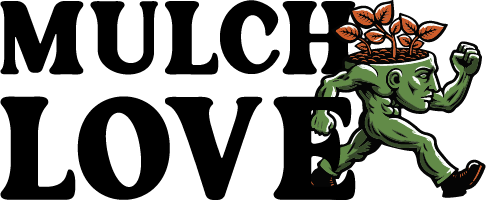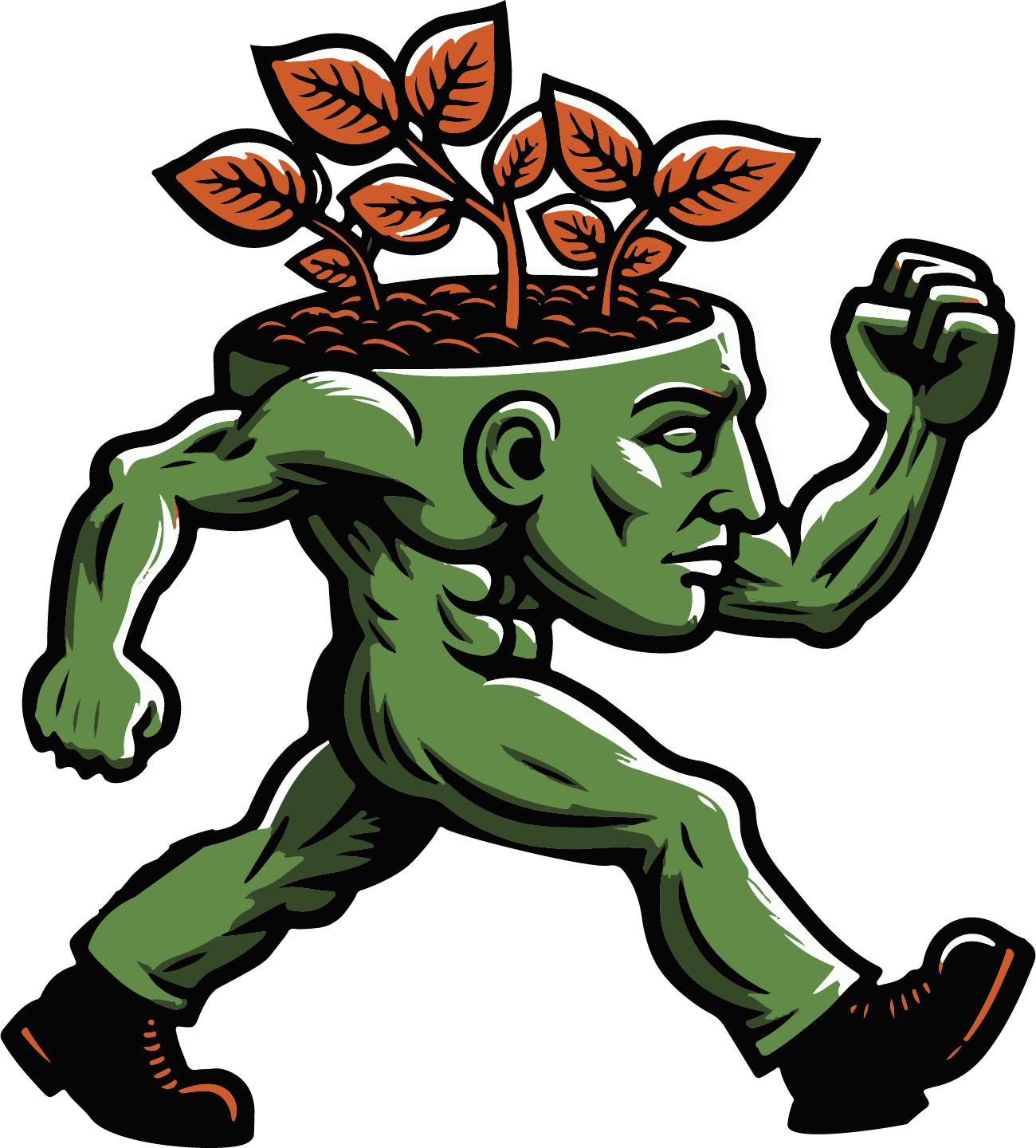Off the arid, windswept coast of Peru lie the Chincha Islands, barren spits of rock that appear, at first glance, to be desolate and devoid of value. Yet, for a brief, explosive period in the 19th century, these unassuming islands were the epicenter of global commerce and a catalyst for agricultural revolution, geopolitical conflict, and immense human suffering.1 Their treasure was not mineral but biological, a resource accumulated over millennia, layer upon painstaking layer: guano. This was no mere bird dropping; it was a highly concentrated, chemically complex substance, a form of “white gold” whose potent seabird guano held the power to rejuvenate the exhausted soils of Europe and North America.1
The story of seabird guano is far more than a historical curiosity or a simple entry in the annals of agriculture. It is a profound lesson in ecology, chemistry, economics, and ethics. It reveals how a unique confluence of oceanography, biology, and climate can create a resource of almost unimaginable value. It serves as a stark case study of the “resource curse,” where newfound wealth fuels not sustainable prosperity but exploitation, inequality, and war.1 And in the modern era, its story has come full circle, offering a model for sustainable resource management that seeks to rectify the destructive legacy of its past.3
This report provides a definitive exploration of seabird guano, journeying from its ecological origins in the vibrant Humboldt Current to its intricate chemical composition. It will delve into the tumultuous history of the Guano Era, examining its societal impacts and the dark legacy of the labor that extracted it. The analysis will then shift to the modern scientific understanding of how seabird guano interact with soil and plants, not just as a source of food but as a biological stimulant that can activate a plant’s innate immune system. Finally, it will offer a comprehensive practical guide for the contemporary gardener and situate guano within the exciting future of sustainable agriculture, comparing it to emerging innovations like insect frass. This is the complete story of nature’s original super-fertilizer—a substance that has shaped our world in ways few can imagine.
Part I:
The Alchemical Composition of Seabird Guano
The extraordinary potency of seabird guano is not an accident of nature but the result of a precise and powerful ecological engine. It is a system where unique oceanographic, biological, and climatic forces converge to concentrate the elemental wealth of an entire marine ecosystem into a stable, terrestrial form. Understanding this process is key to appreciating why seabird guano nutrients are so uniquely effective.
From Ocean to Earth: The Ecological Engine of Guano Production
The genesis of Peruvian seabird guano begins deep in the Pacific Ocean with the Humboldt Current. This cold, northward-flowing current drives a phenomenon known as coastal upwelling, where frigid, nutrient-dense water from the ocean floor is forced to the surface.5 This process brings a massive infusion of nitrates, phosphates, and silicates into the sunlit photic zone, fueling an explosion of phytoplankton. This phytoplankton bloom supports one of the most productive marine food webs on the planet, including vast schools of small, oily fish, most notably the Peruvian anchoveta (Engraulis ringens). These immense fish populations, in turn, sustain enormous colonies of specialized seabirds, often referred to as “guano birds.” The three principal species responsible for the high-quality Peruvian deposits are the Guanay Cormorant (Leucocarbo bougainvilliorum), the Peruvian Booby (Sula variegata), and the Peruvian Pelican (Pelecanus thagus).3 These birds consume the anchoveta, processing and concentrating the rich marine nutrients. Seawater itself contains over 90 dissolved elements, and as these elements move up the food chain from plankton to fish to bird, they become biologically concentrated in the birds’ excrement.
The final, and perhaps most critical, element in this natural alchemy is the climate. The guano islands off the coast of Peru and northern Chile are situated in one of the world’s driest coastal deserts.5 The cold Humboldt Current cools the air above it, preventing the formation of rain clouds. This near-total absence of rainfall is crucial because it prevents the highly soluble nitrogen and phosphorus compounds in the bird droppings from being leached away.2 Instead, under the intense equatorial sun, the guano bakes, dries, and mineralizes, accumulating over centuries and even millennia into deposits that, at the start of the 19th-century boom, were over 150 feet deep in some places.1 This ancient, undisturbed accumulation process is what preserved the seabird guano in their uniquely potent and stable form.

A Complete Nutritional Profile: More Than Just N-P-K
While synthetic fertilizers are often defined by their three primary macronutrients—Nitrogen (N), Phosphorus (P), and Potassium (K)—seabird guano offers a far more complex and complete nutritional profile. Its value lies not only in the high concentration of N-P-K but also in its unparalleled breadth of secondary and trace elements, making it one of the most comprehensive fertilizers available, whether organic or artificial.
The N-P-K ratio of seabird guano varies depending on its age, source, and the diet of the birds. Freshly deposited or well-preserved guano, often called “white guano,” is exceptionally high in nitrogen, with typical analyses ranging from a balanced 10−10−1 to a nitrogen-rich 13−12−2.5 In contrast, older, more fossilized deposits, sometimes referred to as “red guano,” have been exposed to some degree of weathering. This process leaches out the more soluble nitrogen compounds, leaving behind a product that is extremely rich in phosphorus, with N-P-K values such as 0−11−0 or 0−9−0.10
Beyond these macronutrients, the true superiority of seabird guano is revealed in its micronutrient content. Because the birds’ diet originates in the elementally rich ocean, their guano contains a full spectrum of over 60 minerals essential for plant health.15 This includes significant quantities of secondary nutrients like calcium (Ca), which can make up to 20% of high-phosphorus guano, magnesium (Mg), and sulfur (S).13 It also provides a vital array of trace elements such as iron (Fe), manganese (Mn), zinc (Zn), copper (Cu), and boron (B)—all of which are critical for enzymatic processes and overall plant vitality but are often missing from conventional fertilizers.18 This comprehensive nutritional package ensures that plants receive not just the fuel for growth but also the essential building blocks for robust health and resilience.
| Guano Type | Typical N-P-K Ratio | Key Secondary & Micronutrients | Primary Horticultural Use | Source(s) |
| Peruvian High-Nitrogen | 12−11−2 to 12−12−2.5 | Calcium (6%), Sulfur (1.5%) | Vigorous vegetative and leafy growth | 11 |
| Peruvian High-Phosphorus | 0−11−0 to 0−9−0 | Calcium (20%) | Prolific flowering, fruiting, and root development | 12 |
| Peruvian Balanced | 10−10−1 | Full spectrum of trace elements | All-purpose fertilizer for balanced growth | 5 |
| Chilean Red Guano (Fossilized) | 4−6−2 | High organic matter, broad micronutrients | Long-term soil conditioning, sustained nutrient release | 18 |
| Detailed Peruvian Analysis | 14.6−5.87−3.42 | Calcium (7.96%), Sulfur (2.25%), Iron, Zinc | Potent nitrogen boost for heavy feeders | 17 |
The Nitrogen Engine: Uric Acid and Its Microbial Transformation
The chemical form of nitrogen in seabird guano is fundamentally different from that in mammalian manure or synthetic fertilizers, and this difference is the key to its unique function in the soil. To conserve water—a critical adaptation for flighted animals—birds do not produce water-soluble urea as their primary nitrogenous waste. Instead, they excrete a thick, semi-solid paste of uric acid (C5H4N4O3).19 Fresh guano is composed of approximately 80% uric acid, which makes it an incredibly concentrated reservoir of nitrogen.
However, uric acid is largely insoluble in water and is not immediately available for plant uptake.20 This is not a flaw but a feature that dictates its powerful interaction with the soil ecosystem. For the potent seabird guano nutrients to be unlocked, the uric acid must be broken down and mineralized by the soil microbiome. A host of soil bacteria and fungi, such as those from the genera Comamonas and Bacillus, produce an enzyme called uricase.22 This enzyme initiates a degradation pathway that converts uric acid into more soluble and plant-available forms of nitrogen, primarily ammonia (NH3) and subsequently nitrate (NO3−) through the process of nitrification.
This biological dependency transforms the act of applying guano. It is not merely a chemical addition to the soil; it is a profound biological event. The guano serves as a powerful food source that stimulates a population boom among beneficial, nitrogen-cycling microbes. This microbial bloom has cascading effects, improving soil structure and unlocking other nutrients already present in the soil. Therefore, the efficacy of seabird guano is directly tied to the health of the soil food web. It functions as both a nutrient source and a catalyst for the very biological processes that make those nutrients available. This elevates guano from a simple fertilizer to a comprehensive soil conditioner and biological stimulant, a quality that sterile, synthetic chemicals can never replicate.
Part II:
A History Written in White Gold: The Guano Era
Before seabird guano became a global commodity that fueled empires and exploitation, it was a sacred and sustainably managed resource. Its history is a dramatic tale of contrasts, pitting ancient wisdom against colonial rapacity and showcasing how a single natural substance could profoundly alter the course of agricultural, economic, and political history.
The Inca’s Sacred Soil: A Model of Ancient Sustainable Agriculture
Long before European scientists “discovered” its properties, the Inca civilization had built a significant part of its agricultural foundation upon the power of seabird guano nutrients. For well over 1,500 years, Andean peoples systematically harvested guano from the coastal islands, recognizing it as an unparalleled tool for conditioning soil and ensuring bountiful harvests in their challenging mountain environment.
The Inca administration’s approach was a masterclass in sustainable resource management. They understood that the guano was a renewable resource only if its producers—the seabirds—were protected. To this end, they enacted strict conservation laws. The islands were divided into sectors for regulated harvesting, and it was forbidden to disturb the birds during their breeding season.27 The penalty for harming or killing a guano bird was death.1 This sophisticated system, born of deep ecological understanding, ensured a continuous supply of fertilizer that helped feed a vast and complex empire, standing as a powerful historical counterpoint to the destructive exploitation that would follow centuries later.29
The Great Guano Boom of the 19th Century
While the Inca revered guano, the Spanish conquistadors, obsessed with silver and gold, largely ignored it. It remained a local resource until the early 19th century, when the Prussian explorer Alexander von Humboldt encountered it during his travels in South America. Astonished by its fertilizing properties, he brought samples back to Europe, where his writings captured the interest of the scientific community. In 1840, the influential German chemist Justus von Liebig formally analyzed guano and confirmed its extraordinary agricultural value, sparking what would become a global “guano mania”.1
The timing was perfect. The agricultural and industrial revolutions in Europe and the United States had led to intensified farming practices that were rapidly depleting soil fertility.2 Guano, with its high concentrations of nitrogen and phosphorus, was the perfect solution. A “guano craze” swept the Western world, and Peru, possessing the world’s largest and highest-quality deposits on its Chincha Islands, found itself in control of the entire global fertilizer industry.1
The economic impact was staggering. From 1840 to 1870, Peru exported an estimated 12 million tons of guano, valued at over USD 500 million (a colossal sum for the era). This immense influx of wealth transformed the young, struggling republic. The government paid off its foreign debts, financed the construction of ambitious railroad projects, and President Ramón Castilla enacted sweeping social reforms, including the abolition of slavery and the establishment of a public education system. Lima was transformed into a cosmopolitan hub of commerce and culture, a city built on bird droppings.1
The Darkest Chapter: Exploitation and Suffering on the Chincha Islands
This glittering prosperity was built on a foundation of unimaginable human suffering. The work of extracting the guano—digging into the dense, rock-hard, ammonia-releasing deposits under a scorching sun—was brutal and deadly.2 The initial workforce consisted of enslaved people, convicts, and local conscripts, but as demand skyrocketed, a more systematic and sinister labor source was found.2
Beginning in the late 1840s, a vast network of traffickers began luring and abducting young men from southern China. These men, promised well-paying jobs, were instead imprisoned in holding pens, or “barracoons,” in ports like Macao before being shipped across the Pacific in horrific conditions.32 Between 1847 and 1874, an estimated 90,000 to 125,000 Chinese men were transported to Peru as indentured laborers, or “coolies”—a system that was, in reality, a new form of slavery.32
On the Chincha Islands, they were treated as disposable property. Armed guards oversaw their work, and they were fed only after completing their daily quota of digging and loading several tons of guano.31 The air was thick with caustic dust and overpowering ammonia fumes that rapidly destroyed their lungs. Punishments for minor infractions were sadistic, including being hung by chains off cliffs or being placed in a leaking boat and forced to bail water continuously to avoid drowning.31 The despair was so absolute that many chose suicide, throwing themselves from the high cliffs onto the rocks below. It was widely believed that of the thousands of Chinese laborers sent to the islands, few, if any, survived the term of their contracts.31 This system of “social murder,” where the conditions of labor made death inevitable, was the hidden human cost that enabled the agricultural boom in the Western world.35
Geopolitics and “Guano Imperialism”
The insatiable demand for seabird guano nutrients quickly escalated from a commercial issue to a geopolitical one, driving colonial expansion and international conflict. Nations scrambled to secure their own sources of this vital strategic resource.
The most striking example of this “guano imperialism” was the United States’ Guano Islands Act of 1856. Pushed by American farmers lobbying for cheaper fertilizer, this extraordinary law authorized any U.S. citizen to claim any uninhabited, unclaimed island containing guano deposits, anywhere in the world, as a territory of the United States. It was a blatant assertion of extraterritorial power and one of America’s first forays into overseas imperialism, leading to the claim of nearly 100 islands in the Pacific and Caribbean and requiring the U.S. Navy to protect these new, remote interests.
The immense value of Peru’s deposits also invited direct military aggression. In 1864, Spain, seeking to reassert its influence over its former colonies, sent a naval expedition that seized the guano-rich Chincha Islands, arguing that a state of war still technically existed with Peru. This act of aggression sparked the Chincha Islands War (1864-1866), which saw Peru form an alliance with Chile, Ecuador, and Bolivia to fight off the Spanish fleet. Though Spain was eventually repulsed, the conflict demonstrated that nations were willing to go to war over bird excrement.
The Inevitable Collapse: The End of an Era
By the 1870s, the Guano Era was drawing to a dramatic close, its collapse brought on by a perfect storm of resource depletion, economic shifts, and technological innovation. The primary driver was the simple fact that the ancient, deep guano deposits that had fueled the boom were nearly exhausted.1 Decades of intensive, unsustainable mining had scraped the islands clean, and the birds could not replenish the supply quickly enough to meet demand.
Peru’s economy, which had become dangerously dependent on this single commodity, was left incredibly vulnerable. The situation was worsened by the global recession known as the Long Depression, which caused the price of guano to plummet.1 Concurrently, vast deposits of a competing fertilizer, sodium nitrate (or “Chile saltpetre”), were discovered and exploited in the Atacama Desert, providing a cheaper alternative.1 The final blow came in the early 20th century with the invention of the Haber-Bosch process, a revolutionary industrial technique that allowed for the synthesis of ammonia from atmospheric nitrogen.19 This invention made cheap, synthetic nitrogen fertilizers widely available, relegating guano from a global strategic commodity to a niche organic product.
The Guano Era stands as a classic historical example of the “resource curse.” The sudden windfall of wealth failed to translate into long-term, diversified economic development for Peru. Instead, it created an “enclave” economy where prosperity was concentrated among a small coastal elite, while the rest of the country stagnated.1 When the guano ran out, the nation was left with massive foreign debt, a collapsed economy, and political instability that culminated in the disastrous War of the Pacific against Chile over the nitrate fields—the very resource that had replaced guano.1 This historical arc also marks a pivotal moment in global agriculture. The guano trade normalized the practice of input-intensive farming, creating a reliance on massive quantities of external fertilizers to boost yields. It set the stage for the chemical-dependent agricultural model of the 20th century, fundamentally altering the global nitrogen cycle and creating a fertilizer treadmill from which modern agriculture is only now beginning to seek an escape.
Part III:
The Science of Growth: How Seabird Guano Nutrients Transform Soil and Plants
The historical and economic significance of seabird guano is rooted in its profound biological and chemical effects on soil and plant life. Modern science has illuminated the complex mechanisms behind its efficacy, revealing that guano functions not merely as a source of raw nutrients but as a dynamic biological agent that activates soil ecosystems and enhances a plant’s own defensive capabilities.
Activating the Soil Food Web
The application of seabird guano initiates a cascade of beneficial activity within the soil food web. Its rich content of organic matter, including complex compounds like uric acid and remnants of fish and crustaceans, provides a high-energy food source for a vast array of soil microorganisms. This infusion of organic material stimulates a rapid increase in the populations of beneficial bacteria, fungi, protozoa, and other microscopic life.
This thriving microbial community becomes an engine for soil improvement. As these organisms consume and process the guano, their activities have several critical effects. They improve soil structure by creating aggregates, which enhances aeration and water infiltration. Their metabolic processes release natural chelating agents and organic acids that help to unlock and mineralize nutrients already present in the soil but previously unavailable to plants. Furthermore, the humus and organic matter from the guano increase the soil’s water-holding capacity, making plants more resilient to drought. In essence, adding seabird guano is akin to feeding the microscopic workforce that maintains soil fertility, creating a healthier, more resilient, and more productive growing environment.
The Chitin Connection: Triggering Innate Plant Immunity
Perhaps the most remarkable scientific discovery regarding organic amendments like guano is their ability to actively communicate with and enhance a plant’s immune system. This process is mediated by a compound called chitin, the second most abundant polysaccharide in nature after cellulose. Chitin is a primary structural component of fungal cell walls and the exoskeletons of arthropods, including insects and the crustaceans that form part of the seabirds’ diet. Critically, chitin is not produced by plants themselves.
Because seabirds consume a diet rich in fish and crustaceans, their guano contains trace amounts of chitin from the digested exoskeletons. Plants have evolved over millennia to recognize the molecular signature of chitin as a sign of a potential threat—either an invading fungal pathogen or a herbivorous insect. This makes chitin a classic example of a Pathogen-Associated Molecular Pattern, or PAMP.
When plant roots encounter chitin in the soil, specialized receptors on the cell surface, known as Pattern Recognition Receptors (PRRs), bind to the chitin molecules. A key class of these receptors are the Lysin Motif (LysM) Receptor-Like Kinases (LysM-RLKs), such as CERK1 in the model plant Arabidopsis. This binding event acts like a key turning a lock, initiating a complex intracellular signaling cascade.50 This cascade triggers a plant-wide state of heightened alert known as Systemic Acquired Resistance (SAR) or Induced Systemic Resistance (ISR).
In this primed state, the plant’s entire immune system is activated. It begins to produce a range of defensive compounds, including phytoalexins (antimicrobial molecules) and, notably, chitinase enzymes—enzymes specifically designed to break down the chitin in fungal cell walls. This systemic response means that even leaves and stems far from the roots become more resistant to attack. The plant is prepared to mount a faster, stronger, and more effective defense against a broad spectrum of future threats.
Functionally, the chitin in seabird guano acts much like a vaccine for the plant’s immune system. By introducing a harmless molecular pattern associated with a threat, the gardener is not just feeding the plant but is actively training its defenses. This process of “priming” the immune system builds a level of resilience and long-term health that cannot be achieved with sterile, synthetic fertilizers that provide only raw nutrients. This is a profound advantage of biologically complex amendments, demonstrating that true plant nutrition involves not just chemistry, but also information and communication between the plant and its environment.
From Root to Fruit: Tangible Benefits in the Garden
The combination of a complete nutritional profile, soil food web stimulation, and immune system activation translates into a host of observable benefits for the gardener. The science of seabird guano nutrients manifests in vigorous, healthy, and productive plants.
- Enhanced Root Development: The high availability of phosphorus, supported by the nutrient-cycling activity of a thriving soil microbiome, promotes the development of robust and extensive root systems. Stronger roots allow plants to more effectively absorb water and nutrients, anchoring them for healthier growth.
- Prolific Flowering and Fruiting: Phosphorus and potassium are critical for reproductive growth. Guano formulations rich in these elements directly fuel the production of more numerous, larger, and higher-quality blossoms and fruits.12 This is particularly beneficial for crops like tomatoes, peppers, melons, and strawberries, as well as all flowering ornamentals.
- Improved Flavor and Quality: The comprehensive suite of trace minerals provided by guano contributes to the complex biochemical processes that create flavor and aroma compounds in fruits and vegetables. Gardeners often report enhanced taste and quality in produce grown with guano compared to that grown with simpler synthetic fertilizers.
- Lush Vegetative Growth: For leafy greens, herbs, and plants in their early growth stages, high-nitrogen guano provides the fuel for rapid development of lush, green foliage. The organic forms of nitrogen are released in sync with the plant’s needs, promoting steady, healthy growth rather than the sudden, weak flush often caused by synthetic nitrogen.
Part IV:
A Practical Guide to Harnessing Seabird Guano Nutrients
Understanding the history and science of seabird guano is fascinating, but its true value for the gardener lies in its practical application. Harnessing the power of seabird guano nutrients requires knowledge of the different types available, correct application methods to maximize benefits, and safety precautions to avoid damaging plants.
Choosing and Applying the Right Guano
The first step is to select a guano product whose nutrient profile matches the specific needs of your plants and their current growth stage. As detailed in Part I, guanos are typically categorized as either high-nitrogen or high-phosphorus.
- High-Nitrogen Guano (e.g., 12−11−2) is ideal for the vegetative stage of growth. Use it for leafy greens like lettuce and kale, for lawns, or for young plants and seedlings to encourage vigorous foliage development.
- High-Phosphorus Guano (e.g., 0−11−0) is best for promoting reproductive growth. Apply it to flowering ornamentals, and fruiting plants like tomatoes, peppers, and strawberries just before and during their blooming and fruiting cycles to enhance yield and quality.
Once the appropriate type is chosen, it can be applied in several ways. It is important to note that seabird guano is highly concentrated and can “burn” plant roots if over-applied.5 Always adhere to the recommended rates and water thoroughly after application to help release the nutrients into the soil. Due to its dusty nature, wearing a mask during application is advisable.5
| Application Type | Recommended Rate (Dry) | Approximate Measurement | Instructions & Frequency |
| New Garden Beds | 2.5−5 lbs per 100 sq. ft. | Approx. 4 – 8 cups per 100 sq. ft. | Thoroughly mix into the top 3 inches of soil before planting. |
| New Transplants | 1−2 tbsp per planting hole | 1−2 tbsp | Mix into the soil at the bottom of the hole and water in well. |
| Established Plants | 1−2 oz per plant | 2.5−5 tbsp | Side-dress around the base of the plant, lightly work into the soil, and water. Apply once per month during the growing season. |
| Containers (New Planting) | 1−2 tbsp per gallon of soil | 1−2 tbsp | Mix thoroughly with the potting medium before planting. |
| Containers (Established) | 1 tbsp per gallon of soil | 1 tbsp | Lightly mix into the soil surface and water in. Apply once per month during the growing season. |
Brewing “Guano Tea”: A Liquid Nutrient Boost
For a rapid nutrient delivery system, especially for plants in need of a quick boost or for deep root feeding, gardeners can create a liquid fertilizer known as “guano tea.” This method makes the seabird guano nutrients soluble and immediately available for plant uptake.5
Basic Guano Tea Recipe:
- Ratio: Combine 1 to 2 tablespoons of seabird guano per gallon of water in a bucket. For larger batches, use approximately 1 cup of guano for every 5 gallons of water.5 Use dechlorinated water if possible, as chlorine can harm beneficial microbes.
- Steeping: Let the mixture steep for 24 to 48 hours.65 Stir or agitate the mixture periodically to help the guano dissolve and to keep the solution aerated.
- Straining: After steeping, strain the liquid through a fine mesh screen, cheesecloth, or old fabric to remove any solid particles.5 This is especially important if you plan to use a sprayer for foliar application, as solids can clog the nozzle.
- Application:
- Soil Drench: Pour the tea directly onto the soil around the base of your plants. A common application rate is one to two cups per plant, adjusting for size.5
- Foliar Spray: Use the strained liquid in a sprayer to coat the leaves of your plants. This allows for rapid nutrient absorption directly through the foliage.
- Use Promptly: It is best to use the prepared tea immediately or within a day, as the microbial life within it is most active when fresh.13 The leftover solid sludge can be added to your garden soil or compost pile.5
For advanced gardeners, this basic tea can be turned into an actively aerated compost tea. By adding an aquarium air pump with an air stone and a simple sugar source like unsulphured molasses, you can dramatically multiply the populations of beneficial aerobic bacteria and fungi in the brew, creating a potent biological inoculant as well as a fertilizer.
Part V:
The Future of Guano: Sustainability in the 21st Century
After a period of relative obscurity following the invention of synthetic fertilizers, seabird guano is experiencing a renaissance. Driven by the growing global demand for organic and sustainably sourced agricultural inputs, this ancient fertilizer is once again a prized commodity.3 However, its future viability depends entirely on addressing the modern threats to the seabird populations that produce it and adhering to a new paradigm of sustainable management that has learned the hard lessons of the past.
Protecting the Source: Modern Threats to the Guano Birds
The vast seabird colonies of the Peruvian coast are fragile ecosystems facing a host of 21st-century pressures. Their survival, and thus the future of the guano industry, is far from guaranteed.
- Overfishing: The industrial fishing fleet operating in the Humboldt Current system is a direct competitor for the birds’ primary food source, the Peruvian anchoveta.3 Overfishing of anchoveta stocks can lead to food shortages for the birds, resulting in reduced breeding success and population declines. The Guanay Cormorant, Peru’s most important guano producer, is now classified as Near Threatened by the IUCN, largely due to this competition for food.3
- Climate Change and El Niño: The El Niño-Southern Oscillation (ENSO) is a natural climatic cycle that dramatically impacts the Peruvian coast. During strong El Niño events, the upwelling of cold, nutrient-rich water ceases, replaced by a layer of warm, nutrient-poor water.7 This causes the anchoveta populations to crash or move to deeper waters, leading to mass starvation and catastrophic breeding failures among seabird colonies.93 Scientists are concerned that climate change may be increasing the frequency and intensity of these devastating events, posing an existential threat to the guano birds.3 The El Niño of 1877-78 was a major factor in the collapse of the original guano industry, and a severe event in the 1980s caused the Guanay Cormorant population to plummet from an estimated three million to fewer than 200,000 birds.3
- Habitat Disturbance and Disease: While direct disturbance from harvesting is now managed, the birds still face threats from other human activities, such as proposals for coastal development near sensitive nesting areas.97 Furthermore, dense colonies are vulnerable to outbreaks of diseases like avian flu, which caused significant mortality among seabirds and other marine wildlife in 2022.98
A Model of Sustainable Management: Learning from the Past
In stark contrast to the reckless exploitation of the 19th century, modern guano harvesting in Peru is a highly regulated and scientifically managed enterprise. The Peruvian government, through agencies like the National Service of Protected Areas (SERNANP) and the Rural Agricultural Development Program (Agrorural), has implemented a system that prioritizes the long-term health of the bird populations.4
This sustainable model is built on several key strategies:
- Protected Status: In 2009, the ecosystem was formally protected as the Guano Islands, Islets, and Capes National Reserve System, the first marine protected area in South America.19
- Rotational Harvesting: Harvesting is conducted on a rotational basis. An island is typically harvested only once every five to seven years, allowing ample time for the guano deposits to replenish and for the bird colonies to breed without disturbance.101
- Manual Labor: The use of heavy machinery is prohibited as it would frighten the birds and disrupt nesting sites. The extraction remains an arduous, manual process, done with picks, shovels, and brooms, much as it was over a century ago.19
- Scientific Monitoring: The entire process is overseen by biologists who monitor the health and size of the bird populations, ensuring that harvesting activities do not have a negative impact.4 Drones are used to monitor less accessible areas and inform decision-making.4
The labor conditions for the modern workforce, while still physically demanding, are a world away from the slavery of the Guano Era. Today’s workers are primarily Quechua-speaking laborers from the Andean highlands who are paid a regulated wage that is significantly higher than what they could earn at home.3 They work seasonally on the islands, living in temporary camps, and their work is essential to this renewed, sustainable industry.9
The Organic Renaissance: Guano’s Place in Modern Gardens
The careful, sustainable management of Peru’s guano resources aligns perfectly with the growing global movement towards organic and regenerative agriculture. Consumers and gardeners are increasingly seeking out natural, effective fertilizers that are produced ethically and with minimal environmental impact. Sustainably harvested seabird guano meet this demand perfectly, offering a product that is not only exceptionally effective but also comes with a story of ecological conservation and historical redemption. For the modern eco-conscious gardener, choosing seabird guano is a vote for a system that values and protects the delicate natural balance that creates this remarkable resource.
Conclusion:
From Ancient Treasure to a Modern Marvel of Sustainability
The journey of seabird guano is a powerful narrative of resource and consequence. It began as a sacred element in the sophisticated agricultural system of the Inca, a symbol of a deep, sustainable relationship between humanity and the natural world. It was then transformed into “white gold,” a global commodity that fueled industrial agriculture and capitalist expansion, but at a horrific cost of human exploitation and ecological devastation. For a time, it seemed destined for obsolescence, a relic of a pre-chemical age, nearly forgotten in the wake of the Haber-Bosch process.
Yet, the story did not end there. In a world now grappling with the consequences of industrial agriculture—depleted soils, broken nutrient cycles, and a reliance on fossil fuel-based inputs—seabird guano has re-emerged, not as a relic, but as a model for the future. Its modern, regulated harvest in Peru stands as a testament to the possibility of sustainable resource management, a system that has learned from the brutal lessons of its past to protect the delicate ecological web upon which it depends.
The enduring power of seabird guano lies in a complexity that synthetic chemistry cannot replicate. It is more than a simple list of elements on a bag; it is a biological concentrate of an entire marine ecosystem. Its value is found not only in feeding the plant with a complete diet of macro- and micronutrients but in feeding the soil itself, stimulating the microbial life that is the true engine of fertility. Most profoundly, through compounds like chitin, it communicates with the plant, awakening its innate defenses and building a resilient, systemic immunity.
To understand the story behind a bag of guano is to connect the simple act of gardening to the grand currents of the ocean, the epic migrations of birds, the rise and fall of empires, and the ongoing quest for a more sustainable relationship with our planet. It enriches the soil, and in doing so, it enriches our understanding of the intricate, powerful, and often surprising ways in which history, ecology, and the garden are intertwined.
Additional readings:
- The Great Peruvian Guano Bonanza: Rise, Fall, and Legacy – COHA, https://coha.org/the-great-peruvian-guano-bonanza-rise-fall-and-legacy/
- Guano The Perilous Cargo Of Flammable And Noxious Fertiliser | Stories | Learn & Explore,
https://hec.lrfoundation.org.uk/whats-on/stories/guano-the-perilous-cargo-of-flammable-and-noxious-fertiliser - Guano: The bird’s bounty | Save Our Seas Magazine, https://saveourseasmagazine.com/guano-the-birds-bounty/
- Guarding the World’s Finest Guano: A Story of Ecology and Economy – YouTube
https://www.youtube.com/watch?v=0NJDL_JHK04 - Seabird & Bat Guano – Fertilizers – Planet Natural, https://www.planetnatural.com/product-category/organic-gardening/organic-fertilizers/seabird-bat-guano/
- Uric acid degradation by the poultry isolates BT UA. ( a ) Area of uric… – ResearchGate,
https://www.researchgate.net/figure/Uric-acid-degradation-by-the-poultry-isolates-BT-UA-a-Area-of-uric-acid-utilization_fig2_268800798 - Uric acid and life on earth – PMC – PubMed Central, https://pmc.ncbi.nlm.nih.gov/articles/PMC5512146/
- Seabird Guano: The Right Poo will Do? – GROlife Fertiliser, https://grolife.com.au/seabird-guano-right-poo/
- Guano Islands, Islets, and Capes National Reserve System form Peru (RNSIIPG),
https://whc.unesco.org/en/tentativelists/6422/





